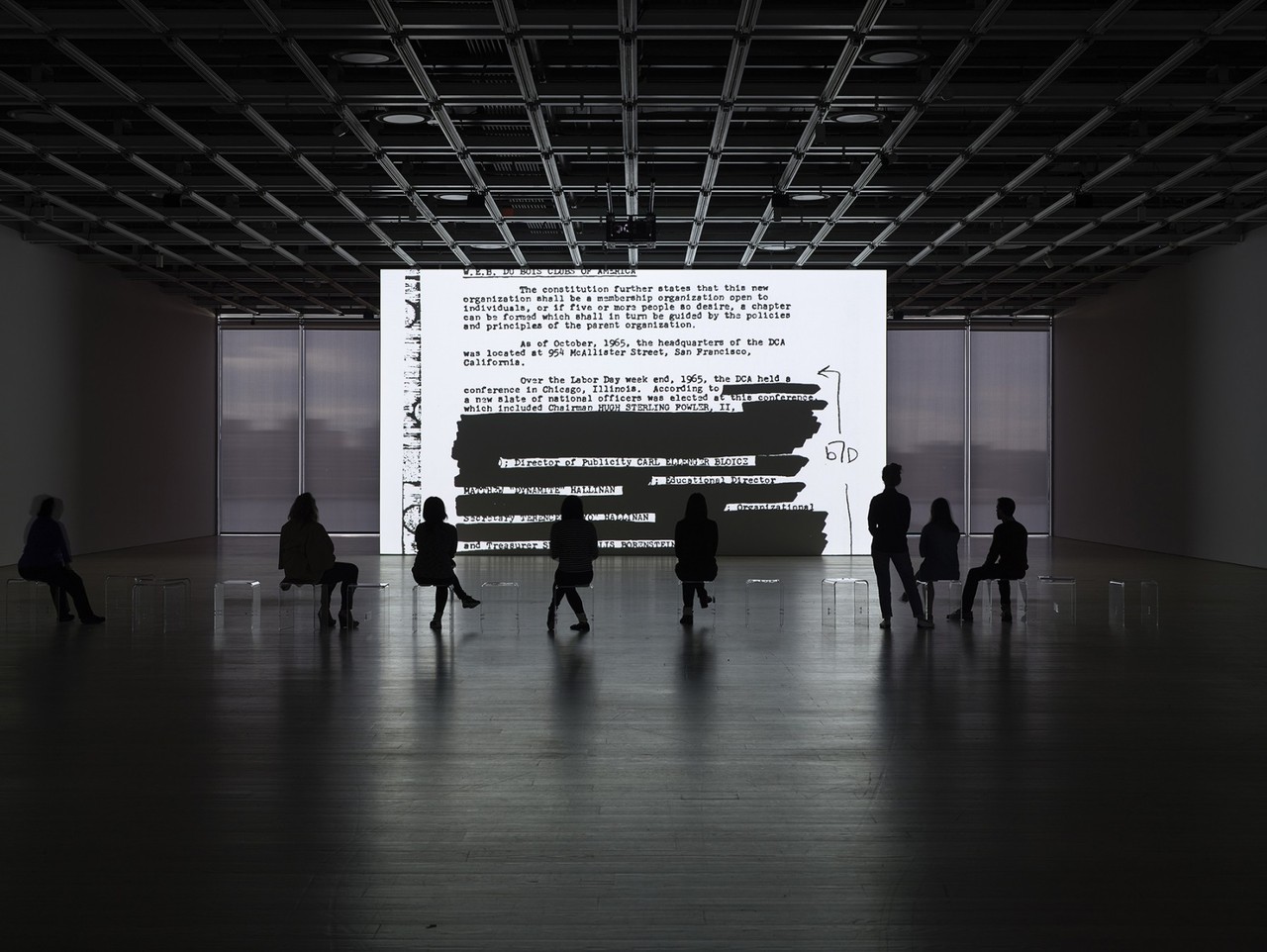Steve McQueen
End Credits
17 Nov 2017 - 11 Mar 2018

Steve McQueen
End Credits, 2012–2016
Installation view: Open Plan: Steve McQueen, Whitney Museum of American Art, New York, April 29–May 14, 2016. Courtesy of the artist and Marian Goodman Gallery and Thomas Dane Gallery, London, Photo: Ron Amstutz
End Credits, 2012–2016
Installation view: Open Plan: Steve McQueen, Whitney Museum of American Art, New York, April 29–May 14, 2016. Courtesy of the artist and Marian Goodman Gallery and Thomas Dane Gallery, London, Photo: Ron Amstutz
STEVE MCQUEEN
End Credits
17 November 2017 – 11 March 2018
Steve McQueen (b. 1969, London; lives in Amsterdam and London) is a film director, producer, screenwriter, and video artist, whose work focuses on historical narratives, politics, race, and other themes concerning a deep social consciousness. In the video installation End Credits, (2012–2016) McQueen pays homage to the African American singer, actor, and Civil Rights activist Paul Robeson (1898–1976). An anti-imperialist committed to fighting inequality, Robeson was watched in the 1950s and blacklisted by the FBI—the organization that kept an extensive archive on the Civil Rights leader and mass media performer. During the McCarthy era, the FBI compiled thousands of pages on Robeson, now a public archive which McQueen used to create this video. This work shows the significantly censored pages read by male and female voices. McQueen creates a compelling visual composition that brings forth the perverse nature of politically driven discrimination and persecution.
End Credits
17 November 2017 – 11 March 2018
Steve McQueen (b. 1969, London; lives in Amsterdam and London) is a film director, producer, screenwriter, and video artist, whose work focuses on historical narratives, politics, race, and other themes concerning a deep social consciousness. In the video installation End Credits, (2012–2016) McQueen pays homage to the African American singer, actor, and Civil Rights activist Paul Robeson (1898–1976). An anti-imperialist committed to fighting inequality, Robeson was watched in the 1950s and blacklisted by the FBI—the organization that kept an extensive archive on the Civil Rights leader and mass media performer. During the McCarthy era, the FBI compiled thousands of pages on Robeson, now a public archive which McQueen used to create this video. This work shows the significantly censored pages read by male and female voices. McQueen creates a compelling visual composition that brings forth the perverse nature of politically driven discrimination and persecution.
